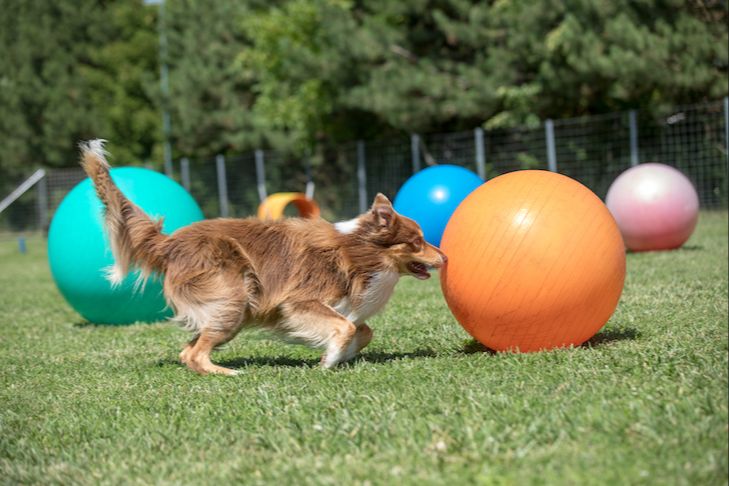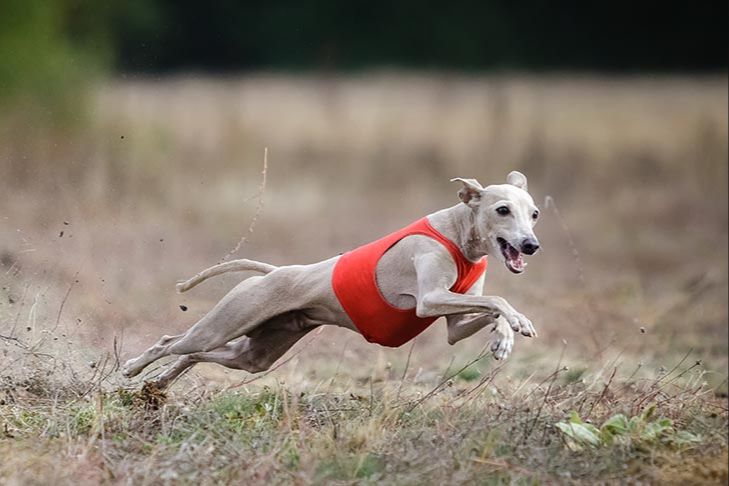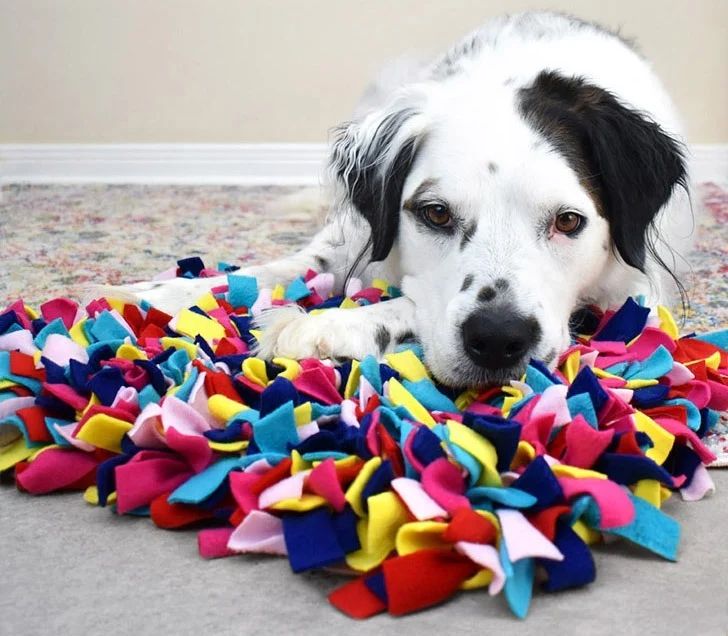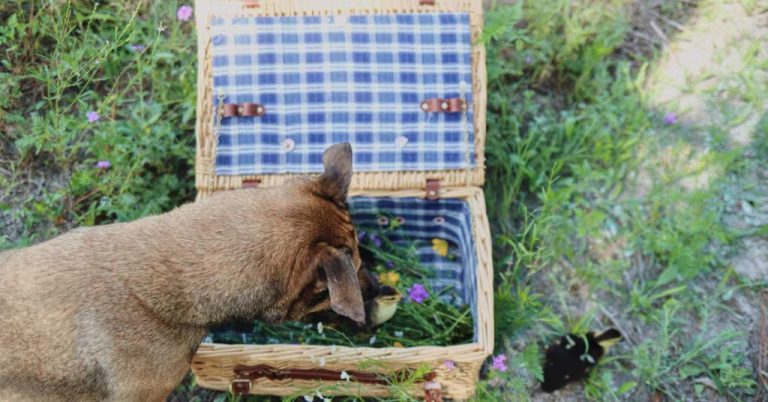Treibball: The New Trend In Dog Activities
Treibball is a dog sport that originated in Germany in the early 2000s. The name “Treibball” comes from the German word “treiben” which means “to herd” or “to push” [1]. In Treibball, dogs must push large exercise balls into a goal to earn points. It is open to all breeds, not just herding dogs, and focuses on positive training methods.
The main objective in Treibball is for the dog to control and maneuver 8 large colored exercise balls into a goal following verbal commands and hand signals from their handler. Dogs start each run from a distance and take turns individually guiding and pushing the balls one at a time into the goal. Points are earned for each ball pushed into the goal within the time limit. The dog-handler team with the most points wins [2].
Treibball promotes trust and cooperation between dogs and handlers. The timed runs encourage focus and impulse control in the dogs. Overall, Treibball provides dogs an outlet to use their natural herding instincts in a structured, positive way.
Treibball Equipment
Treibball requires some specialized equipment to play the game. The key pieces of equipment are:
- Balls – Treibball uses large inflatable or soft foam balls that are light enough for a dog to push around. Competition-approved treibball balls range from 65cm to 100cm in diameter. Balls come in a variety of materials like vinyl, leather, or foam. Specialty balls may have grips or handles on them to make it easier for the dog to push.
- Stabilizer rings – These plastic donut-shaped rings fit around the ball to keep it from rolling or moving while the dog tries to push it. The rings help stabilize the ball.
- Goals – The goals are round pen-like enclosures with an opening on one side for the ball to enter. Goals can be made from plastic pipes or netting attached to poles. The goal opening is wider than the ball’s diameter.
- Goal line – This is a marked line on the ground that the front of the ball must cross to count as a successful push into the goal.
- Handler’s box – A taped off box on the ground where the handler must stand when directing the dog.
Treibball equipment like balls and goals can be purchased from specialty retailers online. Clubs and training facilities may also have equipment available. Custom equipment can be handmade as well. Using properly sized and weighted balls is important for dogs of different breeds and sizes to play comfortably and avoid injury (Treibball Equipment Resources).
Training a Dog for Treibball
Training a dog for treibball requires patience, consistency and positive reinforcement. There are some key training principles and commands to teach your dog before they can start maneuvering balls into goals.
The first step is teaching your dog to target and lie down reliably on cue. Use treats to lure your dog into a down position, then add the verbal command “down.” Reinforce by rewarding with treats each time they follow the command. Increase distance over time until they will lie down from across the room.[1]
Once they have mastered this, start introducing balls and teaching them to go around or behind the ball to get into a down position. Reward generously for interacting appropriately with the balls. Avoid letting your dog play with or chew on the balls.
Key commands to teach are “touch” for targeting the ball with their nose or paw, “around” for circling around the ball, and “push” for pushing the ball forward with their nose or body. Always reward desired behaviors.
Some important techniques are chaining commands, marking correct behaviors with a clicker or “yes” cue, and using food lures or target sticks. Keep training positive, consistent and fun for your dog.
Treibball Commands
Treibball relies on a specific set of commands for directing the dogs during play. Handlers use both verbal cues and hand signals to guide the dog in pushing the ball. Some of the most common commands used in Treibball include:
Come By – Tells the dog to move in a clockwise direction around the ball. Usually paired with a sweeping hand motion.

Away – Cues the dog to go counterclockwise around the ball. Accompanied by an opposite hand signal.
Left and Right – Directs the dog to push the ball to the handler’s left or right side. Given with pointing in the proper direction.
Around – Instructs the dog to do a complete loop around the ball. Done with a circular hand motion.
Lay Down – Asks the dog to stop and lay down. Said with a downward palm signal.
These commands allow handlers to guide the dog in maneuvering the ball as desired. With practice, dogs learn to respond to subtle voice inflections and hand motions during play. Clear, consistent training is key to developing reliable Treibball commands.
Source: Australian Shepherd Lovers Facebook Page
Treibball Strategies and Techniques
Treibball requires handlers to utilize specific herding maneuvers and handling skills to successfully guide their dogs during competition. Some key strategies and techniques include:
Herding Maneuvers – Handlers need to master maneuvers like gathering, driving, shedding, and penning to control the dog’s movement and keep balls within the course boundaries. Gathering involves moving the dog clockwise or counterclockwise to group balls together, while driving refers to moving the dog and balls in a straight line forward. Shedding is used to isolate one or more balls from the group, and penning contains balls in a designated area.
Handling Skills – Handlers guide their dogs through courses using voice commands, whistle cues, and body language. Skilled handling involves giving clear, consistent commands and using cues like exaggerated arm movements to signal the dog where to move. Having good timing, rhythm, and spatial awareness are also critical handler skills.
Problem Solving – Competitions require quick creative thinking and problem solving from handlers. For example, if balls get spread out across the course, the handler must strategize how to gather them efficiently. If a dog is struggling to move a certain ball, the handler may need to innovate new herding techniques or change their handling approach to succeed. Flexibility and thinking on one’s feet are key in Treibball.
For more information see:
https://nationaltreibball.com/Foundations
Treibball Courses and Setups
Treibball courses come in different shapes and sizes depending on the level of competition. According to the National Treibball Association, competitions are held on rectangular courses that are a minimum of 20 feet wide by 40 feet long.
For beginners, a smaller course may be used. A good size for home or hobby training is about 10 feet wide by 20 feet long. This allows enough space for basic maneuvers without requiring a large area.
The playing field is divided into distinct zones. At the end of the field is the ‘goal area’ which is 5 feet deep. This is where the dog will ultimately herd the balls. Along the rest of the length is the ‘field area’. The two are separated by a line marked with tape, chalk, rope or cones [1].
Different course layouts can be created using the balls as obstacles. Common patterns include scattered, wall, waves, and circles. These present the dog with different challenges to navigate and control the balls.
Balls of varying sizes and colors are used, but regulation Treibball uses 22-inch exercise balls. Lighter balls around 10 inches may be preferred for easy maneuvering by dogs when first learning.
Competing in Treibball
Treibball competitions have three levels – novice, intermediate, and advanced. Dogs compete to earn titles at each level such as TD (Treibball Dog), TDX (Treibball Dog Excellent), and VTCh (Versatile Treibball Champion) according to the rules set by organizations like the American Treibball Association. Competitions consist of timed runs through designated treibball courses.
During a competition run, one handler and dog team works at a time in an enclosed ring. Handlers use verbal commands and hand signals to direct their dogs to push exercise balls into goal frames in a set sequence against the clock. The team must complete the course accurately and quickly to earn points. The winning team has the highest combined score of correctly ordered goals and shortest time.
Runs are judged based on the team’s speed, control, flow, skill, and enthusiasm. Judges evaluate the handling ability of the handler and the training of the dog. Points are deducted for faults such as knocked over goal frames, skipped goals, and handler interference with balls. Higher level competitions require more difficult techniques, sequences and strategies.
Health Benefits of Treibball
Treibball provides many health benefits for dogs, both mentally and physically. One of the biggest benefits is the mental stimulation it provides. Treibball requires dogs to focus, problem solve, and make quick decisions, which keeps their minds active and engaged. The constant training and practicing of commands also helps strengthen the dog’s cognitive abilities. According to the AKC, regular Treibball sessions will keep dogs mentally stimulated, which can help prevent problem behaviors that result from boredom (source).
In addition to mental stimulation, Treibball is a very physically demanding activity. Pushing and maneuvering balls requires strength and endurance. According to The Academy of Pet Careers, the constant running, pushing, and maneuvering involved in Treibball provides excellent physical exercise for dogs (source). It helps build muscle, improve cardiovascular health, and encourage overall fitness. The physical demands of the sport mean dogs get an intense workout during each Treibball session.
Finally, practicing and competing in Treibball strengthens the bond between a dog and its handler. The constant training time spent together helps reinforce the dog’s focus on and responsiveness to the handler. Successfully executing maneuvers together in competition helps build trust and an intuitive understanding between a dog and handler team.
Getting Involved in Treibball
If you want to get started with Treibball, the first step is finding a class or trainer in your area. Many dog training facilities now offer Treibball classes, so check with trainers in your local area to see if they have classes or private lessons available. You can also search for “Treibball classes near me” online to find options in your vicinity.
There are a growing number of Treibball clubs forming around the country as well. These clubs allow you to meet and train with other Treibball enthusiasts. Look for Treibball clubs on social media sites like Facebook, or search for “Treibball clubs near me.” Some examples of Treibball clubs include The British Treibball Club and regional clubs like Thunder Paws in Bristol.
In addition to classes and club training days, there are an increasing number of Treibball events and competitions held across the UK and internationally. From fun matches to sanctioned trials, these events allow you to put your training to the test. Keep an eye out for Treibball seminars and workshops as well, which are great for improving your skills. The British Treibball Club Facebook page lists many of the major Treibball events happening across the country.
With the rise in popularity of Treibball, there are more opportunities than ever to get involved with this fun and engaging dog sport. Seek out classes, clubs, and events in your area to get started.
The Future of Treibball
Although Treibball is still a relatively new dog sport, having only originated in Germany in the early 2000s, it has rapidly grown in popularity over the past decade. As more people discover Treibball and its benefits, the sport continues to gain traction worldwide.
Treibball provides an enjoyable activity for dogs of all backgrounds and energy levels. For herding breeds, it taps into their natural instincts in a structured, engaging way. For dogs and handlers looking for a fun way to work together, Treibball promotes training, exercise, and problem-solving skills 1. As a lower impact sport, it can be done year-round unlike some seasonal dog sports.
Competitive Treibball leagues and tournaments are on the rise globally. The sport has spread beyond Europe to countries like Canada, Australia, and the United States. Major kennel clubs are starting to recognize Treibball, further adding to its legitimacy. Treibball tournaments are even being held at popular dog shows and sporting events.
Looking forward, Treibball is likely to continue expanding as more dog enthusiasts discover it. Given the minimal space and equipment required, Treibball can be readily adopted by individuals, trainers, and organizations. Its flexible, engaging nature makes Treibball accessible and rewarding for dogs and handlers alike. For those seeking an enjoyable new way to interact with their dogs, Treibball provides the perfect solution.





